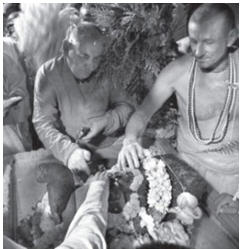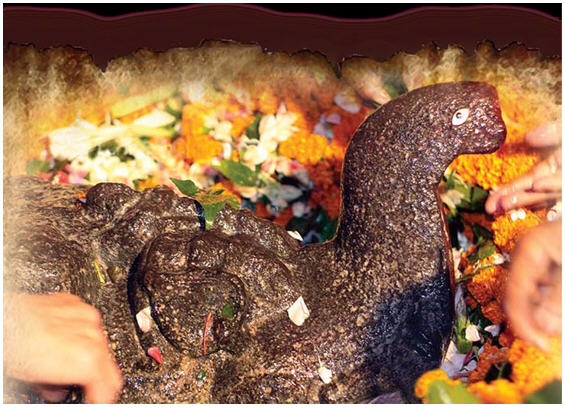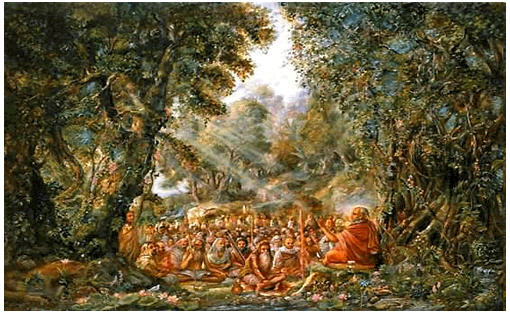
Lord Nityananda narrated this story to Sri Jiva in the Navadvipa-dhama mahatmya, Parikrama-khanda: Towards the south of Madhyadvipa there is a river called the Gomati. Naimisharanya is situated on the bank of this river. During ancient times when Kali became powerful, all the rishisheaded by SaunakaRishi gathered here to hear the Gaura-bhagavata from the lotus mouth of SutaGosvami. Whoever recites the Puranas, sitting at this place during the month of Kartika, will become free from all suffering and easily achieve Vraja-dhama by engaging in the service of Gauranga. Once, while the glories of Gauranga were being spoken here in Naimisharanya, Lord Siva desired to come and listen. He was traveling from Kailasa to this place, riding on his bull carrier. But he understood that he was not travelling fast enough to arrive on time to hear the gaura-katha. He therefore requested the use of Lord Brahma’s swan carrier so that he could travel faster. Riding on the swan very swiftly, he managed to reach Naimisharanya in time to hear the most wonderful gaura-katha. Lord Siva heard the glories of Lord Gauranga and His associates from the Puranas. All the followers of Lord Siva, the inhabitants of Kasi, were chanting the holy name of Gauranga and dancing, surrounding Lord Pancanana (the five-faced Lord Siva), throwing flowers in great ecstasy. When SriJiva heard this description from NityanandaPrabhu he was in such ecstasy relishing the glories of the dhamathat he could not control himself and started rolling on the ground. That day all the devotees along with Lord Nityananda stayed at Naimisharanya. The following morning all of them set off to take darsanaof Sri Pushkara.
Directions: Take the first road on the left just past the Hamsa-vahana temple. From that road, take the first road on the left. This is a dirt road that will keep getting smaller. Continue for approximately a kilometer going through mud-hut villages and mango groves. After the mango groves, you will need to walk as a car or rickshaw will not be able to continue.



